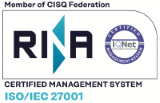- APIs
- Integrations
- Customization
-
Documentation
- PUBLIC APIS
- PREMIUM APIS
- INTEGRATIONS
- CUSTOMIZATION
- PACKS
- PREDEFINED RESOURCES
- GENERAL
- Error Codes
- Morphosyntactic Tagsets
- Ontology
- Supported Formats
- Supported Languages
Topics Extraction Console
Topics Extraction - Console
Oops! It seems you do not have access yet to the resource you've selected!
To use it, just request the 30 day free trial period for the vertical or language pack that contains the resource by clicking the corresponding 'Start Trial' button.
To use it, just request the 30 day free trial period for the vertical or language pack that contains the resource by clicking the corresponding 'Start Trial' button.
Result
Oops!
Something is not working, try again in a minute.
Featured Posts
- Voice of the Customer in Retail: Beyond price 09/Jul/2019
- Tutorial: create your own deep categorization model 20/Jun/2019
- The leading role of NLP in Robotic Process Automation 11/Jun/2019
- Vertical packs: trial and subscription 09/Apr/2018
Useful Links
2024 © All Rights Reserved | Data protection policy | Terms and conditions | Data Processing Agreement MeaningCloud is a a trademark by MeaningCloud LLC

